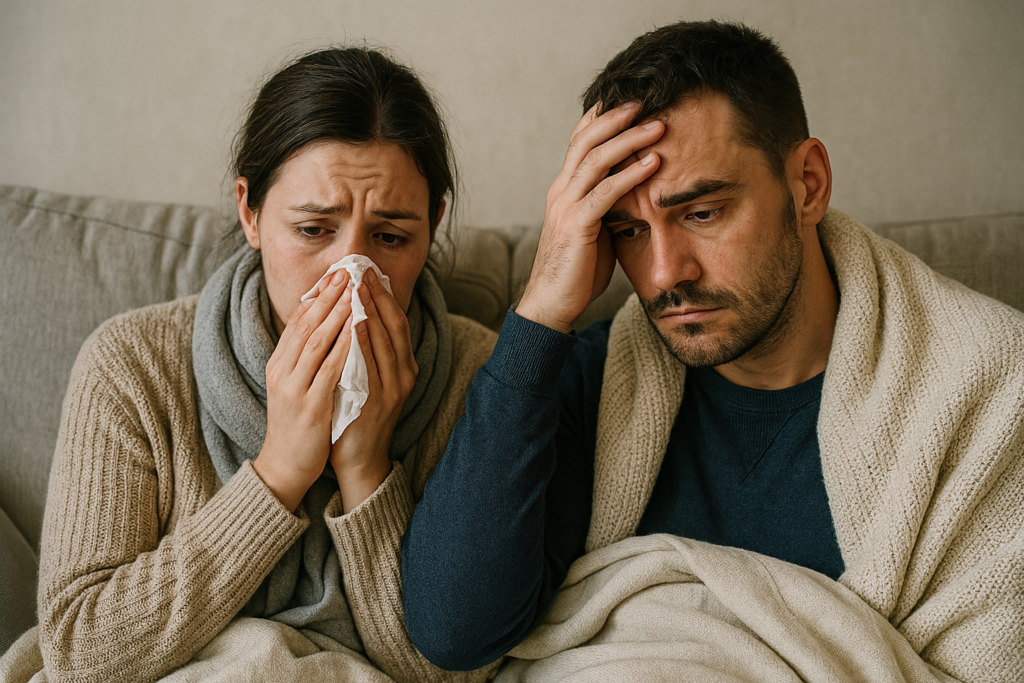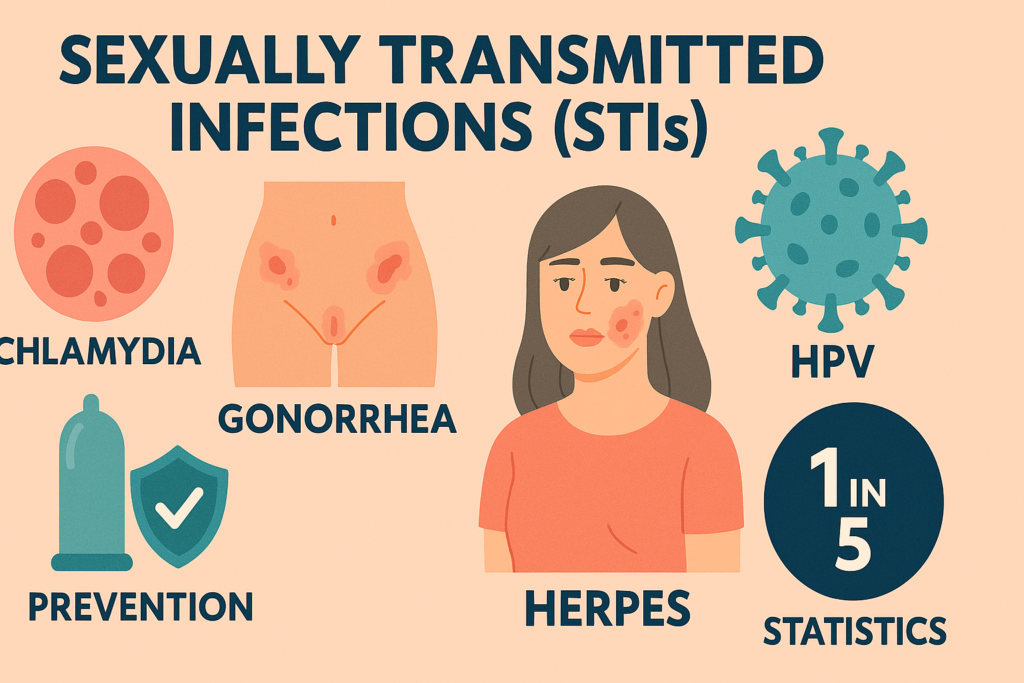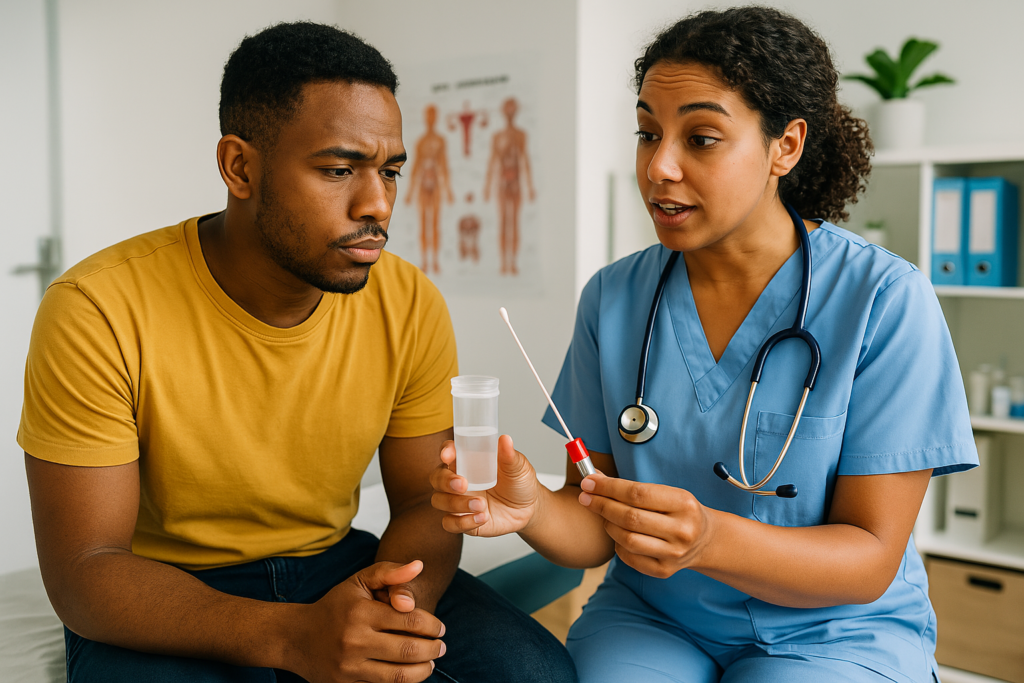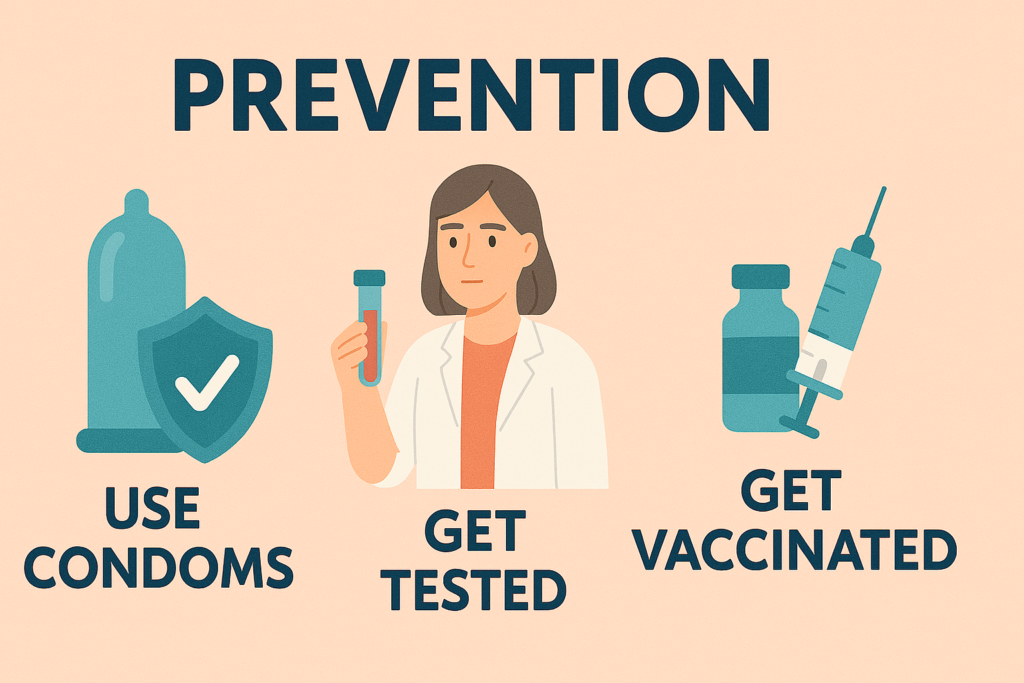Table of Contents
- Introduction
- What Makes STIs Common?
- The Most Common STIs
- STI Symptoms: What to Watch Out For
- STI Testing & Diagnosis
- STI Prevention
- STI Treatment
- STI Statistics & Impact
- Addressing Stigma & Promoting Open Communication
- Resources & Support
- Conclusion
Introduction
Did you know that approximately 1 in 2 sexually active people will contract a sexually transmitted infection (STI) by the age of 25? This startling statistic underscores the critical importance of understanding sexual health.
What Are STIs?

Sexually transmitted infections (STIs), often interchangeably called sexually transmitted diseases (STDs), are infections primarily spread through sexual contact. The key difference lies in terminology: an STI refers to the presence of an infection, while an STD indicates the disease has developed symptoms.
Why This Guide Matters
This comprehensive guide aims to demystify sexually transmitted infections, providing crucial information about prevention, symptoms, testing, and treatment. Our goal is to empower readers with knowledge that can protect their sexual health and well-being.
What Makes STIs Common?
Several critical factors contribute to the widespread transmission of STIs:
- Lack of Awareness: Many people are uninformed about STI transmission and prevention.
- Risky Sexual Behaviors: Unprotected sex and multiple partners increase infection risks.
- Asymptomatic Infections: Many STIs show no immediate symptoms, leading to unknowing transmission.
- Social Stigma: Embarrassment prevents open discussions and timely testing.
- Access Barriers: Limited healthcare access and testing opportunities.
The Most Common STIs

Chlamydia
| Aspect | Details |
| Symptoms | – Painful urination- Abnormal discharge- Pelvic pain (women)- Testicular pain (men) |
| Transmission | Sexual contact, including vaginal, anal, and oral sex |
| Testing | Urine test or genital swab |
| Treatment | Antibiotics (typically azithromycin or doxycycline) |
| Complications | Infertility, pelvic inflammatory disease if untreated |
Gonorrhea
| Aspect | Details |
| Symptoms | – Burning during urination- Unusual discharge- Painful testicles- Vaginal bleeding between periods |
| Transmission | Sexual contact, vertical transmission during childbirth |
| Testing | Urine test, genital swab |
| Treatment | Antibiotics (ceftriaxone and azithromycin) |
| Complications | Infertility, increased HIV transmission risk |
Genital Herpes (HSV)
| Aspect | Details |
| Symptoms | – Painful genital blisters or ulcers- Flu-like symptoms during first outbreak- Tingling or burning before blisters appear- Painful urination |
| Transmission | Sexual contact, skin-to-skin contact with infected areas- Can spread even without visible symptoms |
| Testing | Viral culture- Blood tests- Physical examination |
| Treatment | Antiviral medications (acyclovir, valacyclovir)- Suppressive therapy available |
| Complications | Increased HIV transmission risk- Potential neonatal transmission during childbirth |
Human Papillomavirus (HPV)
| Aspect | Details |
| Symptoms | – Genital warts- Often asymptomatic- Some strains can cause cervical cancer |
| Transmission | Sexual contact- Skin-to-skin genital contact- Can spread even without visible symptoms |
| Testing | Pap smear- HPV DNA tests- Visual examination |
| Treatment | No cure for the virus- Warts can be removed (cryotherapy, surgical removal)- Vaccination available |
| Complications | Increased risk of cervical, anal, and throat cancers- Potential respiratory papillomatosis |
Syphilis
| Aspect | Details |
| Symptoms | Primary Stage:– Painless genital sores- Swollen lymph nodes Secondary Stage:– Skin rash- Fever- Fatigue Tertiary Stage:– Severe organ damage |
| Transmission | Sexual contact- Direct contact with syphilis sores- Vertical transmission during pregnancy |
| Testing | Blood tests- Darkfield microscopy- Physical examination |
| Treatment | Penicillin injections- Antibiotics for different stages- Long-term treatment may be necessary |
| Complications | Neurological damage- Cardiovascular problems- Blindness- Potential fatal outcomes if untreated |
Trichomoniasis
| Aspect | Details |
| Symptoms | – Unusual genital discharge- Genital inflammation- Itching or burning- Many cases are asymptomatic |
| Transmission | Sexual contact- Sharing wet towels or swimwear (rare) |
| Testing | Microscopic examination- Wet mount preparation- Nucleic acid amplification tests |
| Treatment | Oral antiprotozoal medications- Typically metronidazole or tinidazole- Treatment of all sexual partners recommended |
| Complications | Increased HIV transmission risk- Potential pregnancy complications- Infertility issues |
HIV (Human Immunodeficiency Virus)
| Aspect | Details |
| Symptoms | Early Stage:-Flu-like symptoms- Fever- Fatigue Advanced Stage:– Significant immune system compromise |
| Transmission | Sexual contact- Blood transmission- Vertical transmission during pregnancy or breastfeeding |
| Testing | Blood tests- Antibody/antigen tests- RNA viral load tests |
| Treatment | Antiretroviral therapy (ART)- Combination of medications- Ongoing medical management |
| Complications | AIDS development- Opportunistic infections- Reduced life expectancy without treatment |
STI Symptoms: What to Watch Out For
General Warning Signs
- Unusual genital discharge
- Burning sensation during urination
- Genital sores or bumps
- Pelvic pain
- Unusual bleeding
Critical Insight
Important: Many STIs are asymptomatic. Regular testing is crucial, even without visible symptoms.
STI Testing & Diagnosis

Testing Options
- Clinic-Based Testing
- Comprehensive screenings
- Professional counseling
- Immediate treatment options
- At-Home Testing
- Convenient
- Confidential
- Growing accessibility
Test Types
- Urine tests
- Blood tests
- Genital swabs
- Physical examinations
STI Prevention Strategies

Safe Sex Practices
- Consistent condom use
- Regular STI screenings
- Open communication with partners
- Limiting sexual partners
Vaccination
- HPV vaccine
- Hepatitis B vaccine
STI Treatment Approaches
Treatment Principles
- Complete prescribed medication courses
- Follow-up testing
- Partner notification
- Ongoing healthcare monitoring
Medication Types
- Antibiotics for bacterial infections
- Antiviral medications for viral STIs
- Symptom management treatments
STI Statistics & Impact
- Global Annual STI Cases: Approximately 374 million new infections
- Economic Cost: Billions in healthcare and productivity losses
- Highest Risk Groups: Young adults aged 15-24
Addressing STI Stigma
Breaking Down Barriers
- Normalize open conversations
- Educate without judgment
- Promote compassionate healthcare
Resources & Support
Recommended Organizations
- Centers for Disease Control (CDC)
- World Health Organization (WHO)
- Planned Parenthood
Conclusion
Sexual health is a critical component of overall well-being. By staying informed, practicing prevention, and seeking timely medical care, you can protect yourself and your partners.
Take Action Today:
- Get regular STI screenings
- Practice safe sex
- Communicate openly with partners
- Seek professional medical advice when needed
Your sexual health matters. Stay informed, stay protected.








